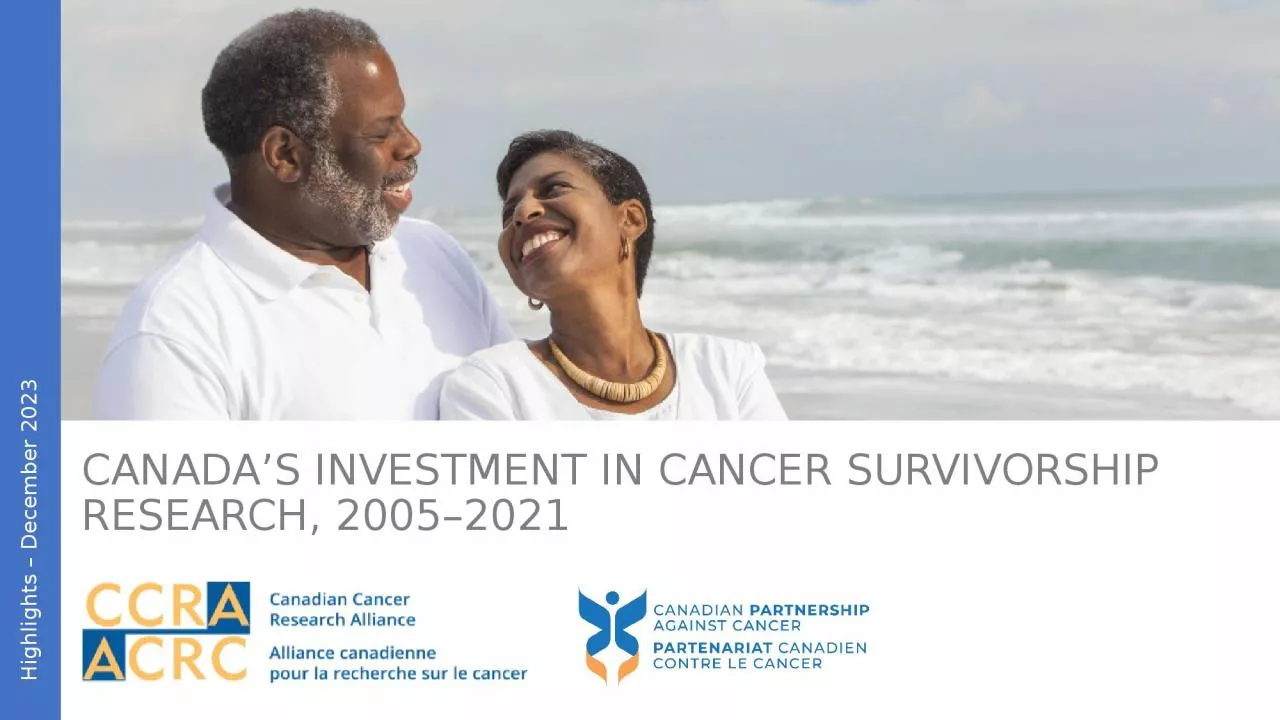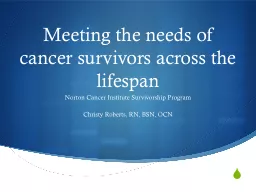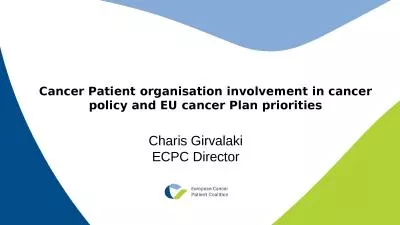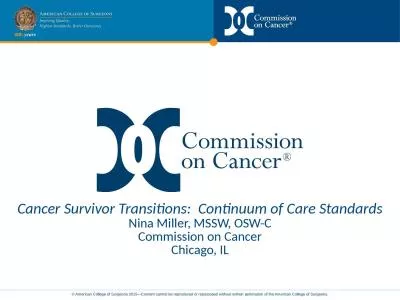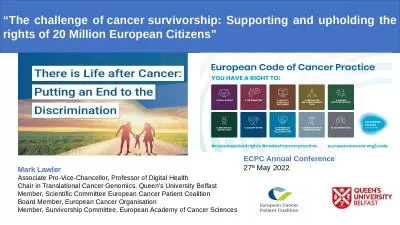PPT-Canada’s Investment in Cancer Survivorship Research, 2005–2021
Author : ash | Published Date : 2024-01-13
The CCRA is an alliance of organizations that collectively fund most of the cancer research conducted in Canada research that will lead to better ways to prevent
Presentation Embed Code
Download Presentation
Download Presentation The PPT/PDF document "Canada’s Investment in Cancer Survivor..." is the property of its rightful owner. Permission is granted to download and print the materials on this website for personal, non-commercial use only, and to display it on your personal computer provided you do not modify the materials and that you retain all copyright notices contained in the materials. By downloading content from our website, you accept the terms of this agreement.
Canada’s Investment in Cancer Survivorship Research, 2005–2021: Transcript
Download Rules Of Document
"Canada’s Investment in Cancer Survivorship Research, 2005–2021"The content belongs to its owner. You may download and print it for personal use, without modification, and keep all copyright notices. By downloading, you agree to these terms.
Related Documents

